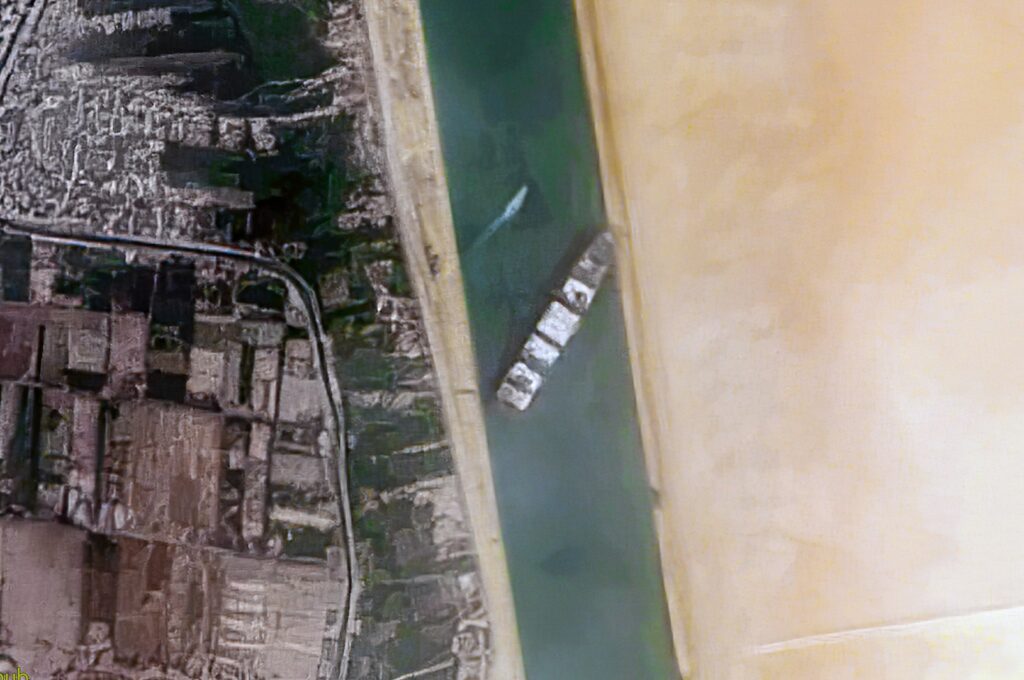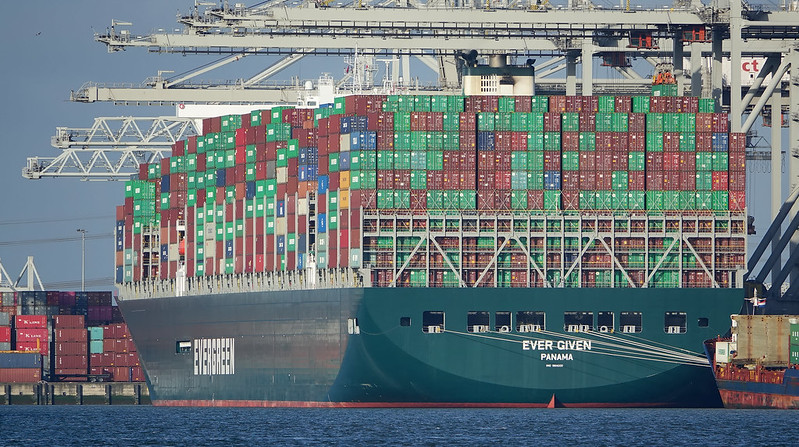Chapter 10. Global Society

Learning Objectives
10.1 Trade, Colonialism and the Origins of Global Society
- Define the stages of the development of global society.
- Analyse the relationship between the history of colonialism and contemporary global society.
10.2. Global Wealth and Poverty
- Describe concepts and indicators of global stratification and global poverty.
- Distinguish between relative and absolute poverty.
- Examine the World Bank’s classification of economies into high-income, middle-income, and low-income.
- Compare the explanations of global inequality from the perspectives of modernization theory, dependency theory and global capitalism theory.
10.3. Contemporary Global Society
- Analyse the lived experience of global society from an interpretive sociology perspective.
- Describe four distinct features of global society: de-traditionalization, globalization, expressive individualism/new tribalism, and the risk/trust dynamic.
Global Society

In the 1960s, Canadian media theorist Marshall McLuhan described the world as a “global village” (McLuhan, 1962; 1964; 1968). Due to the development of electronic media and other technological advances, communication from almost any point in the world to any other point became instantaneous. The sharing of news, culture and viewpoints expanded from neighbourhoods to the world. It was as if everyone lived in everyone else’s backyard.
“Ours is a brand-new world of all-at-once-ness. ‘Time’ has ceased, ‘Space’ has vanished. We now live in a ‘global village’…a simultaneous happening. Information pours upon us, instantaneously and continuously. As soon as information is acquired, it is rapidly replaced by still newer information” (McLuhan, 1967).
The sense of simultaneity (“time has ceased”) and closeness (“space has vanished”) that McLuhan described is a product of globalization. As Ulrich Beck (1944-2015) put it, the effect of globalization has been to “conjure away distance” on a variety of different levels (Beck, 2000). Individual actors no longer “live and act in the self-enclosed spaces of national states and their respective national societies. Globalization means that borders become markedly less relevant to everyday behaviour in the various dimensions of economics, information, ecology, technology, cross-cultural conflict and civil society” (Beck, 2000).

Globalization therefore refers to the processes of increasing integration and interconnection, which incorporate people across the world into a single global society (Albrow and King, 1990). It is “the intensification of worldwide social relations which link distant localities in such a way that local happenings are shaped by events occurring many miles away and vice versa” (Giddens 1991). If, as Dorothy Smith (1999) said in Chapter 1 An Introduction to Sociology, the social is the “ongoing concerting and coordinating of individuals’ activities,” then these activities must be understood to be increasingly coordinated on a global scale.
Using a global level of analysis, sociologists study how the world operates as a whole. In a global society, local activities need to be understood in a global context. The local is global, and vice versa. Many view this process with anxiety, while others view it with hope. In the current period of globalization, which Robertson (1990) describes as its “uncertainty phase,” many examples come to mind where global level factors significantly affect people’s lives in different ways in different locations.
Global pandemic: The COVID-19 virus was first recorded in Wuhan, China, in December 2019, but by March 2020, it had become a global pandemic, spreading initially through the networks of global tourism (Tsiotas & Tselios, 2022).
Global climate change: Global climate change driven by emissions from human activities does not respect societal borders. It is producing weather and climate extremes in every region across the globe (heatwaves, heavy precipitation, droughts, and tropical cyclones), and threatening the homes and livelihoods of people living in low elevation coastal zones through rising sea levels — around 11% of the world’s population in 2010 (IPCC, 2019).
Global economy: Global flows of economic investment and disinvestment affect the availability of work in various locations. Investment reflects global markets and prices for different commodities, impacting everything from the volatility of the petro-economy in Northern Alberta to the affordability of housing in Vancouver and Toronto.
Container Ships: Globalization and Uncertainty
These are some of the big-ticket items confronting global society and will be discussed later in the textbook. But to take a smaller example of the effects of globalization, the grounding of the gigantic container ship Ever Given in the Suez Canal for several days in March 2021, indicates just how interconnected the world has become in the 21st century.

In 2021, the Ever Given was one of approximately 100 mega-container ships worldwide that are almost as long as the Empire State Building is high, as wide as a city block, and capable of transporting 20,000 six-metre-long metal shipping containers. In the 21 km stretch of the canal where the Ever Given got stuck, its keel would have been only a few metres from the bottom. The canal was not built for such huge ships. Initial reports stated the ship was blown off course by heavy winds, although subsequent reporting indicated communication problems, lack of tugboats, and poor piloting contributed to the ship running aground (Yee and Glanz, 2021). The accident caused an estimated $6–10 billion per day in costs and backed up the 12% of global trade that passes between Europe and Asia through the canal (Russon, 2021). The blockage severely disrupted global supply chains, just-in-time manufacturing processes, workers’ jobs and consumer prices around the world.
There are numerous components of the global economy at play in this incident. The first is the global shipping industry itself. Container shipping was only invented in 1956, but because the cost of shipping boxes is so inexpensive, secure, and efficient, approximately 90% of all non-bulk cargo is now moved in containers (Dicken, 2015). Containerization is a key technological driver of contemporary globalization, the means by which the clothes, coffee mugs, wall paint, laptops — practically all the raw materials, parts and household products — in any Canadian home are transported. The accessories of contemporary life are thoroughly global in origin, largely because of the transformation in the transportation and trade of goods brought about by container ships.
The second component is the multinational corporations that propel global trade. Characteristics of multinational corporations include the following: a large share of their capital is collected from various nations, their business is conducted without regard to national borders, they concentrate wealth in the hands of core nations and already wealthy individuals, and they play a key role in the global economy. The global nature of ownership and management of container ships is an indicator of the interlinked complexity of multinationals and corporate business models in the global economy. A Japanese company owned the Ever Given, and it was registered in Panama, operated by a Taiwanese conglomerate, and staffed by an all-Indian crew employed by a German ship management company (Wise, 2021).
The third component at play is the emergence of global assembly lines, where the process of designing and assembling products is distributed in different geographical locations, and global commodity chains, where resources, workers and corporations are internationally coordinated for the purpose of manufacture and marketing of goods and services (Plahe 2005). For instance, Apple engineers and designs its iPhone in the United States, rare earth minerals for its components are sourced in Mongolia, semi-conductors are made in Taiwan, touch screens are made in Japan and Korea, gyroscopes are made in Switzerland, and they are shipped to China for assembly, while tech support is outsourced to Cork, Ireland (Anthony, 2022).
As the Ever Given incident illustrates, container shipping exemplifies the precarious nature of the tightly coordinated network of interactions in global assembly lines and global commodity chains. Key to these processes are just-in-time production and distribution systems, which depend on goods arriving precisely when needed. Just-in-time production saves manufacturers and stores the cost of storage and inventory, but it only takes a single problem in the supply chain for the entire system to break down. There are numerous “choke points,” like the Suez Canal, where things can go wrong, affecting container ports, jobs, costs of production, prices of components and goods, and inflation around the world (Browne, 2021).
Furthermore, global assembly lines and global commodity chains bring a global division of labour, in which comparatively wealthy workers from core nations compete with the low-wage labour pool of peripheral and semi-peripheral nations. This can lead to a sense of xenophobia, which is an intense fear and even hatred of foreigners and foreign goods. Corporations trying to maximize their profits in the United States are aware of this risk and attempt to “Americanize” their products, selling shirts printed with U.S. flags that were nevertheless made in China, Mexico or elsewhere.
Finally, the Ever Given incident demonstrates the global complexity of international regulation and national jurisdictions. The development of the sovereign state system was itself a product of early modern globalization (see discussion later in the chapter), but it means that individual states have jurisdiction over regulations within their borders, whereas many processes they seek to regulate are global in scale. Maritime traffic through the Suez Canal is a case in point: numerous overlapping authorities were engaged in the grounding of the Ever Given (Yee and Glanz, 2021). Who was responsible for the accident?
Shipping industry analysts note that the development of mega-container ships is the product of companies attempting to maximize efficiency and minimize costs in a competitive marketplace, but that canals and ports were not designed to handle them safely. The International Maritime Organization is responsible for mandating safety standards, but the Egyptian government maintains the canal, and collects fees for passage through it. The Suez Canal Authority provides the pilots to navigate the canal, while the ship’s captain has ultimate authority over the ship. Investigating an accident is the responsibility of the country where it happened (in this case Egypt), and of the country where the ship is registered (in this case Panama), rather than a neutral party such as the International Maritime Organization. Sorting out what went wrong and what to do to prevent it happening again involves a complex interplay of competing interests and jurisdictions, while the consequences of incidents like these are shared globally.
The example of the Ever Given shows us how one small event can have significant worldwide ramifications due to the interconnectedness of global society. Larger events like pandemics, climate change, and decisions about capital investment and disinvestment can be enduring and potentially catastrophic on a global scale. How did the world become so globalized?
Media Attributions
- Figure 10.1 Container Ship ‘Ever Given‘ stuck in the Suez Canal, Egypt – March 24th, 2021, modified by Pierre Markuse from Copernicus Sentinel data, is used under a CC BY 2.0 licence.
- Figure 10.2 Marshall McLuhan, half-length portrait, standing, leaning on television set on which his image appears by Bernard Gotfryd has no known copyright restrictions.
- Figure 10.3 Anthony Giddens at the Progressive Governance Conference, Budapest, Hungary, 13 October, 2004 by Szusi is used under a CC BY-SA 3.0 licence.
- Figure 10.4 Ever Given by Kees Torn is used under a CC BY-SA 2.0 licence.

